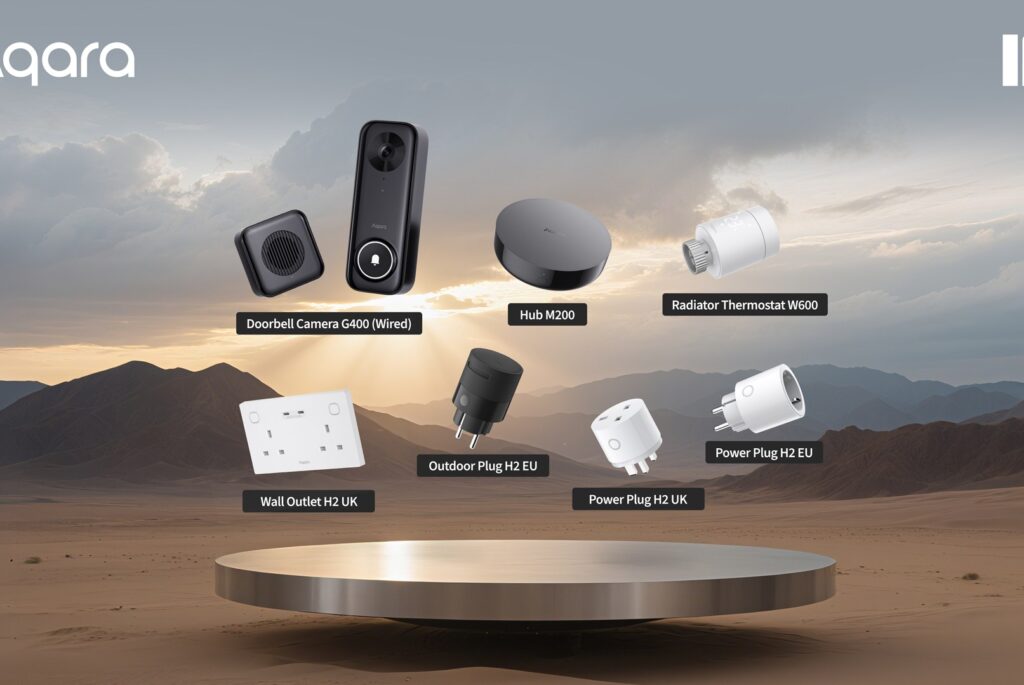Imagine walking into your home and having everything just the way you like it—lights dimmed, music playing, and the temperature perfectly set. Sounds great, right?
But how do you make sure your smart home device actually works for you and not the other way around? You might have bought the latest gadget, but without the right tips, it can feel more like a hassle than a help.
You’ll discover simple, practical ways to use your smart home device effectively. By the end, you’ll feel confident controlling your space with ease, saving time, and even cutting down on energy bills. Ready to unlock the full potential of your smart home? Let’s dive in!
Choosing The Right Device
Choosing the right smart home device is key to a smooth experience. The right choice saves time and money. It also makes your daily tasks easier. Before buying, think about what you want the device to do. Different devices offer different features. Pick one that fits your lifestyle and home setup. This guide helps you find the best device for your needs.
Assessing Your Needs
Start by listing the tasks you want to automate. Do you want to control lights, temperature, or security? Know which rooms need smart devices. Think about your daily routine and habits. This helps pick a device with useful features. Also, decide if you want voice control or app control. Clear needs make choosing simpler and smarter.
Comparing Popular Brands
Look at top brands and what they offer. Some brands focus on ease of use. Others may offer more advanced features. Check user reviews for real experiences. See which brands have good customer support. Price is important but balance it with quality. A reliable brand often means better performance and updates.
Considering Compatibility
Check if the device works with your current gadgets. It should connect easily with your phone and Wi-Fi. Some devices only work with certain smart home systems. Make sure it supports the apps or assistants you use. Compatibility avoids frustration and extra costs. Choose devices that fit well into your smart home setup.

Credit: www.nytimes.com
Setting Up Your Device
Setting up a smart home device is the first step to making your home smarter. This process is simple and does not take much time. Follow the steps carefully to get your device ready for use. A proper setup ensures smooth operation and better performance.
Unboxing And Initial Steps
Start by carefully unboxing your smart home device. Check the package for all included parts. Read the quick start guide or manual. This guide has important information about the device. Place the device in a location near your Wi-Fi router. Keep it close to a power source for easy setup.
Connecting To Wi-fi
Power on your smart device. Open its settings menu or app interface. Find the Wi-Fi setup option. Choose your home Wi-Fi network from the list. Enter the Wi-Fi password correctly. Wait for the device to connect. A successful connection allows the device to communicate with other smart devices.
Installing Required Apps
Download the official app for your device on your phone or tablet. Use the app store on your device to find it. Install the app and open it. Follow the app instructions to link the device. This app helps control and customize your smart device. Keep the app updated for the best experience.
Customizing Device Settings
Customizing device settings helps you make the smart home device truly yours. It lets you set up the device to fit your daily needs. Small changes can improve your experience and save time.
Adjusting settings allows you to control how the device listens, responds, and alerts you. This way, the device works better for your lifestyle.
Personalizing Voice Commands
Change the default wake word to something you like. This makes the device respond only when you want. You can also create custom commands for tasks you do often. It saves time and makes using the device easier.
Teach the device to recognize different voices in your home. This helps it give personalized answers to each person. It also keeps your information private from others.
Adjusting Privacy Controls
Review and change what data the device collects about you. Turn off features that you do not want to share. This keeps your personal information safe.
Use options to delete your voice recordings regularly. Check which apps have access to your device and remove the ones you don’t use. Privacy controls give you peace of mind.
Configuring Notifications
Set notifications to alert you only for important events. Choose how you want to receive alerts—by sound, light, or on your phone. This helps you stay informed without feeling overwhelmed.
Turn off notifications during quiet hours or when you are busy. Customize alerts for different family members if your device supports it. Proper notification settings keep your home calm and organized.
Integrating With Other Devices
Integrating your smart home device with other gadgets creates a smooth, connected experience. It helps your devices work together and respond to your needs. This makes your home more efficient and convenient.
Linking Smart Lights And Thermostats
Connect smart lights and thermostats to save energy and improve comfort. Set lights to dim when the thermostat lowers the temperature. This creates a cozy atmosphere and reduces power use. You can schedule both devices to turn off when you leave home.
Connecting Security Systems
Link your smart home device with security cameras and alarms. Receive alerts on your phone if the system detects unusual activity. You can turn on lights or lock doors remotely. This integration helps keep your home safe without extra effort.
Using Smart Plugs And Sensors
Smart plugs let you control regular devices through your smart home system. Connect sensors to detect motion, temperature, or humidity. These sensors can trigger smart plugs to turn on or off devices automatically. This setup saves energy and adds convenience.
Creating Automation Routines
Creating automation routines helps your smart home work for you. It saves time and makes daily tasks easier. Automation lets devices act without your direct control. You can set rules based on time, actions, or other devices.
Well-planned routines create a smooth, connected home experience. They improve comfort, save energy, and enhance security.
Setting Schedules And Triggers
Schedules let your devices run at set times. For example, lights can turn on at sunset. Thermostats can adjust temperature before you wake up. Triggers cause actions based on events. A motion sensor can turn on lights when you enter a room. You can combine schedules and triggers for smart control.
Utilizing Ifttt And Other Services
IFTTT stands for “If This Then That.” It links different apps and devices. You can create custom automation rules. For instance, turn on your coffee maker when your alarm stops. Other services like Zapier also connect smart devices. These tools expand what your smart home can do.
Managing Scenes For Convenience
Scenes group several actions into one command. A “Good Night” scene might turn off lights and lock doors. You activate scenes by voice or app. This reduces repetitive tasks. Scenes make your home respond exactly how you want in any moment.
Troubleshooting Common Issues
Troubleshooting common issues with smart home devices helps keep everything running smoothly. Problems can disrupt your daily routine. Knowing how to fix basic issues saves time and frustration. This guide covers easy steps to handle typical problems.
Resolving Connectivity Problems
Smart devices often face connection issues. Start by checking your Wi-Fi signal strength. Move your device closer to the router if the signal is weak. Restart your router and smart device to refresh the connection. Ensure your device is connected to the correct network. Remove any obstacles blocking the signal. Sometimes, resetting network settings on the device helps restore the link.
Updating Firmware And Software
Updates fix bugs and improve performance. Check for firmware and software updates regularly. Use the device’s app or website to find updates. Download and install updates promptly to avoid glitches. Keep your smartphone or tablet’s app updated too. Updates keep your device secure and functioning well.
Contacting Support When Needed
Some problems require expert help. Contact customer support if issues persist. Provide clear details about the problem and device model. Use official support channels like phone, chat, or email. Follow their instructions carefully for the best results. Support teams can guide you through complex fixes or replacements.
Maximizing Security And Privacy
Smart home devices make life easier but can pose risks to privacy. Protecting your data and home is crucial. Simple steps help secure your devices effectively. Focus on key actions that keep your smart home safe.
Using Strong Passwords
Create passwords that are hard to guess. Use a mix of letters, numbers, and symbols. Avoid common words or easy sequences like “1234”. Change default passwords immediately after setup. Use different passwords for each device or account.
Enabling Two-factor Authentication
Two-factor authentication adds an extra layer of security. It asks for a second code after your password. This code often comes via phone or email. Enable this feature in your device’s security settings. It stops hackers even if they get your password.
Regularly Reviewing Permissions
Check app permissions often. See which apps have access to your data. Remove permissions that seem unnecessary or risky. Update device software to fix security holes. Staying aware reduces chances of privacy breaches.

Credit: www.the-ambient.com
Exploring Advanced Features
Smart home devices have many advanced features. These features make daily life easier and more fun. Exploring these options helps you get the most from your device. Understanding how to use these tools boosts your smart home’s value and comfort.
Voice Recognition And Personalization
Voice recognition lets your device understand different voices. It knows who is speaking and responds accordingly. This helps keep your settings personal and secure. You can set preferences for each family member. The device learns your voice commands over time. This makes interactions faster and more natural.
Integrating With Smart Home Hubs
Smart home hubs connect all your devices in one place. They help your smart speaker, lights, and thermostats work together. Integration allows you to control many devices with one command. It saves time and reduces the need for multiple apps. Hubs also improve automation and routines at home.
Using Ai And Machine Learning
AI and machine learning allow your device to learn habits. It studies your routines and adjusts settings automatically. This makes your home more energy-efficient and comfortable. The device can suggest improvements based on your behavior. Over time, it becomes smarter and more helpful.

Credit: www.youtube.com
Frequently Asked Questions
How Do I Set Up A Smart Home Device Initially?
To set up a smart home device, first connect it to your Wi-Fi network. Download the relevant app, follow on-screen instructions, and create an account if needed. Ensure firmware updates are installed for optimal performance and security.
What Are The Best Tips For Using Smart Home Devices?
Use voice commands for convenience, schedule routines for automation, and integrate devices for seamless control. Regularly update software and secure your network to protect privacy and improve efficiency.
How Can I Improve Smart Home Device Security?
Use strong, unique passwords and enable two-factor authentication. Keep devices updated, avoid public Wi-Fi, and segregate smart devices on a separate network to reduce hacking risks.
Which Smart Home Devices Work Well Together?
Devices compatible with the same platform, like Alexa, Google Home, or Apple HomeKit, work best together. Choose devices supporting common standards for smooth integration and control.
Conclusion
Using a smart home device can make daily tasks easier and faster. Start by setting up simple commands that fit your routine. Keep your device updated to stay secure and work well. Explore different features bit by bit. Don’t rush—learn one function at a time.
Ask questions when you need help. Enjoy the convenience and comfort it brings to your home. Smart devices are tools to make life smoother. Use them wisely, and they will serve you well.






